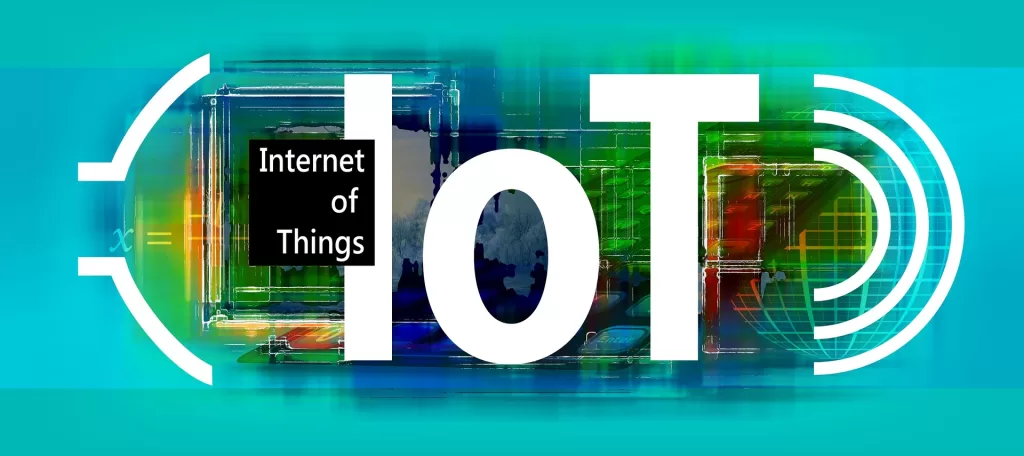The Ultimate Guide to Understanding IoT: From Definitions to Best Practices and Ethical Considerations
Definition of IoT
What is the Internet of Things and how does it work?
The Internet of Things (IoT) is a system that connects physical objects to the internet, allowing them to collect and share data. This system includes devices such as sensors, cameras, and other “smart” devices that are designed to communicate with one another and with people.
- Have you ever noticed any smart devices around you that are connected to the internet, such as smart thermostats or security cameras?
- Do you use any wearable technology, such as fitness trackers or smartwatches, that are connected to the internet?
- Have you ever heard of smart cities, where sensors and other IoT devices are used to manage traffic, monitor air quality, and improve city services?
- Are you familiar with precision agriculture, where IoT devices are used to monitor crop health and optimize farming operations?
- Have you ever used a smart home assistant, such as Amazon Echo or Google Home, to control other IoT devices in your home?

Image by Gerd Altmann from Pixabay
The way IoT works is by using sensors that are embedded in devices to collect data, which is then sent to a central system or “hub” where the data can be analyzed and used to automate processes or make decisions. For example, a smart thermostat may collect data on the temperature in a room and adjust the temperature accordingly based on the user’s preferences.
IoT devices can also communicate with each other through the internet, allowing them to work together to complete tasks. For example, a smart home might include devices such as smart lights, locks, and speakers, all of which can communicate with each other and with the homeowner’s smartphone.
The main goal of IoT is to make life more convenient and efficient by automating tasks and providing useful data to help people make better decisions. An example of this is the use of IoT in agriculture, where sensors can be used to collect data on soil moisture and nutrient levels, which can be used to optimize crop growth and yield.
Current state of IoT
Overview of the current state of IoT, including adoption rates and major players
The current state of IoT is rapidly growing, with more and more devices being connected to the internet every day. The adoption of IoT devices and systems is increasing in a wide range of industries, including healthcare, transportation, manufacturing, and home automation.
According to a report by Statista, The number of Internet of Things (IoT) devices worldwide is forecast to almost triple from 9.7 billion in 2020 to more than 29 billion IoT devices in 2030. In 2030, the highest number of IoT devices will be found in China with around 5 billion consumer devices.
This growth is being driven by factors such as increased demand for automation, the rise of smart cities, and advancements in communication technologies such as 5G.
In terms of major players in the IoT market, there are many large companies that are investing heavily in IoT research and development. Some examples of these companies include:
Amazon: Through its Alexa platform and smart home devices, Amazon is one of the biggest players in the consumer IoT market.
Google: Google’s Nest line of smart home devices and its Cloud IoT platform are helping to drive adoption of IoT in the home and in businesses.
Microsoft: With its Azure IoT platform and investments in AI and machine learning, Microsoft is a major player in the industrial IoT market.
Cisco: As a provider of networking equipment and infrastructure, Cisco is well-positioned to help companies build and manage IoT systems.
IBM: IBM’s Watson IoT platform and its focus on edge computing are helping to drive innovation in the industrial IoT space.
Benefits of IoT
Benefits of IoT, such as increased efficiency and cost savings
IoT offers a wide range of benefits that can improve efficiency, reduce costs, and enhance the overall quality of products and services. Some of the main benefits of IoT include:
Increased efficiency: IoT can help streamline processes by automating routine tasks and providing real-time data. For example, in the manufacturing industry, IoT sensors can be used to monitor equipment and detect issues before they cause downtime. This can save time and reduce costs associated with maintenance and repairs.
Cost savings: IoT can also help reduce costs by optimizing energy usage, reducing waste, and improving supply chain management. For example, in the agriculture industry, IoT sensors can be used to monitor soil moisture levels and adjust irrigation systems accordingly. This can help reduce water waste and improve crop yields, resulting in cost savings for farmers.
Improved quality of products and services: IoT can provide valuable data and insights that can help improve the quality of products and services. For example, in the healthcare industry, IoT sensors can be used to monitor patients remotely and provide real-time data to healthcare providers. This can help improve patient outcomes and reduce healthcare costs.
Enhanced customer experiences: IoT can also help enhance customer experiences by providing personalized and timely services. For example, in the retail industry, IoT sensors can be used to track customer behavior and provide targeted offers and recommendations based on their preferences. This can help improve customer loyalty and drive sales.
Challenges of IoT
Major challenges facing IoT, such as security concerns and interoperability issues
While IoT offers many benefits, there are also several challenges that need to be addressed in order to fully realize its potential. Some of the major challenges facing IoT include:
Security concerns: IoT devices are vulnerable to security threats such as hacking, malware, and data breaches. This is particularly concerning because IoT devices often collect sensitive information such as personal health data or financial information. For example, An attack on Capital One’s cloud environment between March and July of 2019 compromised the personal data of approximately 100 million customers, click here to watch video on its case study.
Interoperability issues: IoT devices often come from different manufacturers and use different communication protocols, which can make it difficult for them to communicate with each other. This can create interoperability issues that make it difficult to integrate IoT devices into existing systems. For example, a smart home system might use different communication protocols for the thermostat, security cameras, and lighting system, making it difficult for these devices to communicate with each other.
Data privacy concerns: IoT devices often collect large amounts of data about users, which can raise concerns about data privacy. For example, smart speakers such as Amazon Echo and Google Home have been criticized for collecting data about users’ conversations and storing this data in the cloud.
Scalability issues: As the number of connected devices grows, managing and scaling IoT systems can become increasingly complex. For example, in the transportation industry, managing fleets of connected vehicles can be challenging, particularly when it comes to software updates and maintenance.

Image by Gerd Altmann from Pixabay
Applications of IoT
Examples of how IoT is currently being used in various industries, such as healthcare, manufacturing, and agriculture
IoT has many applications across various industries, enabling organizations to collect and analyze data in real-time to improve efficiency, reduce costs, and enhance customer experiences. Here are some examples of how IoT is currently being used in different industries:
Healthcare: IoT devices like wearable devices and sensors are being used to monitor patients’ health in real-time. For example, a wearable device can track a patient’s heart rate, blood pressure, and other vital signs and transmit this data to a healthcare provider’s system. This can help healthcare providers detect potential health issues early on and provide timely interventions to improve outcomes.
Manufacturing: IoT sensors are being used to monitor equipment performance and identify potential issues before they cause downtime. For example, sensors can track temperature, vibration, and other variables to determine when equipment needs maintenance or repairs. This can help manufacturers optimize production processes, reduce costs, and improve product quality.
Agriculture: IoT sensors are being used to monitor soil moisture levels and adjust irrigation systems accordingly. For example, a sensor can detect when the soil is too dry and trigger an irrigation system to water the crops. This can help farmers reduce water waste and improve crop yields.
Smart homes: IoT devices like smart thermostats, lighting systems, and security cameras are being used to automate routine tasks and improve home security. For example, a smart thermostat can learn a homeowner’s temperature preferences and adjust the temperature accordingly, while a security camera can alert homeowners when someone is at the door.
Future possibilities of IoT
Predictions for how IoT will continue to evolve in the coming years, such as increased automation and AI integration
Increased automation: IoT devices will increasingly be used to automate routine tasks, freeing up time for individuals and organizations. For example, smart homes will become even more automated, with devices like robotic vacuum cleaners and self-cleaning ovens becoming more commonplace.
AI integration: IoT devices will increasingly be integrated with artificial intelligence (AI), allowing for more sophisticated data analysis and decision-making. For example, AI algorithms could be used to analyze data from IoT sensors in manufacturing plants to identify patterns and make predictions about equipment failures.
Edge computing: With the increasing number of connected devices, there will be a greater need for processing power closer to the devices themselves. Edge computing, which involves processing data on local devices rather than sending it to a central server, will become more common.
5G connectivity: The rollout of 5G networks will enable faster and more reliable connectivity, allowing for real-time data processing and analysis. This will enable new applications for IoT, such as remote surgery and autonomous vehicles.
Sustainability: IoT devices will increasingly be used to monitor and reduce energy consumption and environmental impact. For example, smart buildings will use IoT sensors to optimize heating and cooling systems, reducing energy waste and costs.
Impact of 5G on IoT
How the rollout of 5G networks will impact IoT, including increased speed and reliability
The rollout of 5G networks is expected to have a significant impact on IoT, providing faster and more reliable connectivity for IoT devices. Here are some ways in which 5G is expected to impact IoT:
Increased speed: 5G networks are expected to provide much faster data transfer speeds than previous generations of cellular networks. This means that IoT devices will be able to transmit data more quickly and efficiently, enabling real-time data analysis and decision-making.
Improved reliability: 5G networks are expected to be more reliable than previous cellular networks, with lower latency and fewer connection drops. This means that IoT devices will be able to maintain a consistent connection to the internet, even in areas with high levels of network congestion.
New applications: The speed and reliability of 5G networks will enable new applications for IoT, such as remote surgery, autonomous vehicles, and augmented reality. For example, a surgeon could use a robot controlled over 5G to perform surgery on a patient located in a different city or country.
More connected devices: With the increased speed and reliability of 5G networks, it will become easier to connect more devices to the internet. This means that more devices will be able to collect and transmit data in real-time, enabling more sophisticated data analysis and decision-making.
Security and privacy in IoT
Major security and privacy concerns associated with IoT, and how they can be addressed
Security and privacy are major concerns in the IoT space, as the large number of connected devices creates new vulnerabilities and risks. Here are some of the major security and privacy concerns associated with IoT, and how they can be addressed:
Unauthorized access: Hackers can potentially gain access to IoT devices and networks, allowing them to steal sensitive data or cause damage to connected devices. To address this concern, IoT devices should be designed with security in mind, using strong encryption and authentication protocols to prevent unauthorized access.
Data privacy: IoT devices collect large amounts of data, including personal and sensitive information, which can be a target for hackers or used for nefarious purposes. To address this concern, IoT devices should implement strong data encryption and privacy controls to ensure that data is not leaked or misused.
Lack of standardization: The lack of standardization in the IoT space can make it difficult to ensure that devices and networks are secure. To address this concern, industry organizations and standards bodies should work to develop common security and privacy standards for IoT devices and networks.
Firmware updates: IoT devices may not receive regular firmware updates, leaving them vulnerable to known security vulnerabilities. To address this concern, IoT device manufacturers should implement regular firmware updates and provide ongoing support for their devices.
Physical security: IoT devices can be vulnerable to physical attacks, such as theft or tampering. To address this concern, IoT devices should be physically secured, with measures such as tamper-resistant casings and secure mounting.
Existing securities and policies of IOT
There are a variety of security and privacy policies that exist in the IoT space, aimed at protecting both individuals and organizations that use connected devices. Here are some of the key policies and regulations related to IoT security:
The General Data Protection Regulation (GDPR): The GDPR is a regulation in the European Union that requires organizations to implement strong data privacy controls for personal data. This includes data collected by IoT devices, and organizations that operate in the EU must comply with the GDPR. Click here to read more.
The California Consumer Privacy Act (CCPA): The CCPA is a privacy law in the state of California that requires businesses to provide consumers with more control over their personal information. This includes information collected by IoT devices, and businesses that operate in California must comply with the CCPA. Click here to read more.
NIST Cybersecurity Framework: The National Institute of Standards and Technology (NIST) has developed a cybersecurity framework that provides guidelines and best practices for securing IoT devices and networks. The framework includes guidelines for risk assessment, threat management, and incident response. Click here to read more.
ISO/IEC 27001: This is a standard for information security management that provides a framework for implementing security controls and managing risks. Organizations that use IoT devices can use ISO/IEC 27001 to help ensure that they have appropriate security measures in place. Click here to read more.
OWASP IoT Project: The Open Web Application Security Project (OWASP) is a non-profit organization that provides guidance and resources for securing web applications. Their IoT project provides guidelines and best practices for securing IoT devices and networks. Click here to read more.
Ethical considerations in IoT
Ethical implications of IoT, such as data privacy and ownership
As the Internet of Things (IoT) continues to grow and evolve, there are several ethical considerations that need to be taken into account. Here are some practical steps taken by companies to protect against the ethical implications of IoT:
Data Privacy: To protect against data privacy concerns, companies can implement strong data privacy policies and ensure that they are in compliance with relevant laws and regulations. This can include implementing data encryption, conducting regular security audits, and limiting access to sensitive data.
Ownership of Data: To address ownership of data concerns, companies can clearly define ownership rights in their contracts and terms of service agreements. They can also provide users with greater control over their data, such as through the use of data consent forms and data deletion requests.
Security: To protect against cyber attacks and other security threats, companies can implement strong security measures, such as firewalls, encryption, and regular software updates. They can also conduct regular security audits and provide employee training on cybersecurity best practices.
Bias: To mitigate the risk of bias in data and decision-making, companies can ensure that their algorithms and machine learning models are trained on diverse data sets and regularly audited for bias. They can also provide transparency around the data and decision-making processes to increase accountability.
Environmental Impact: To address environmental concerns, companies can prioritize the use of energy-efficient IoT devices and develop sustainability plans for the disposal of these devices. They can also implement green energy solutions and promote the use of renewable energy sources.
Best practices for implementing IoT
Tips for businesses and individuals looking to implement IoT, including considerations for data management and security
Start with a clear plan: Before implementing IoT devices, businesses and individuals should have a clear plan in place for how they will be used and how data will be collected, stored, and analyzed. This can help to avoid data overload and ensure that the IoT devices are aligned with business goals.
Prioritize security: Security should be a top priority when implementing IoT devices. This can include using strong passwords and encryption, regularly updating software and firmware, and limiting access to sensitive data.
Manage data effectively: With the vast amount of data generated by IoT devices, it is important to have effective data management practices in place. This can include implementing data analytics tools and techniques to extract insights from the data, and ensuring compliance with data privacy laws and regulations.
Develop partnerships: Collaboration with other businesses and organizations can help to accelerate the adoption of IoT and promote standardization of protocols and security practices.
Invest in employee training: Employee training is essential to ensure that they have the necessary skills to effectively manage and maintain IoT devices. This can include training on data security and privacy best practices, as well as on the use of data analytics tools.
Focus on interoperability: Interoperability is important for IoT devices to work together seamlessly. Businesses and individuals should choose devices that adhere to industry standards and protocols to ensure compatibility with other devices and systems.
Plan for scalability: As the number of IoT devices grows, it is important to plan for scalability. This can include using cloud-based platforms to support the growing volume of data and devices.
Overall, the successful implementation of IoT requires careful planning and consideration of security, data management, and interoperability. By following best practices, businesses and individuals can fully realize the benefits of IoT while minimizing risks and ensuring the protection of sensitive data.








